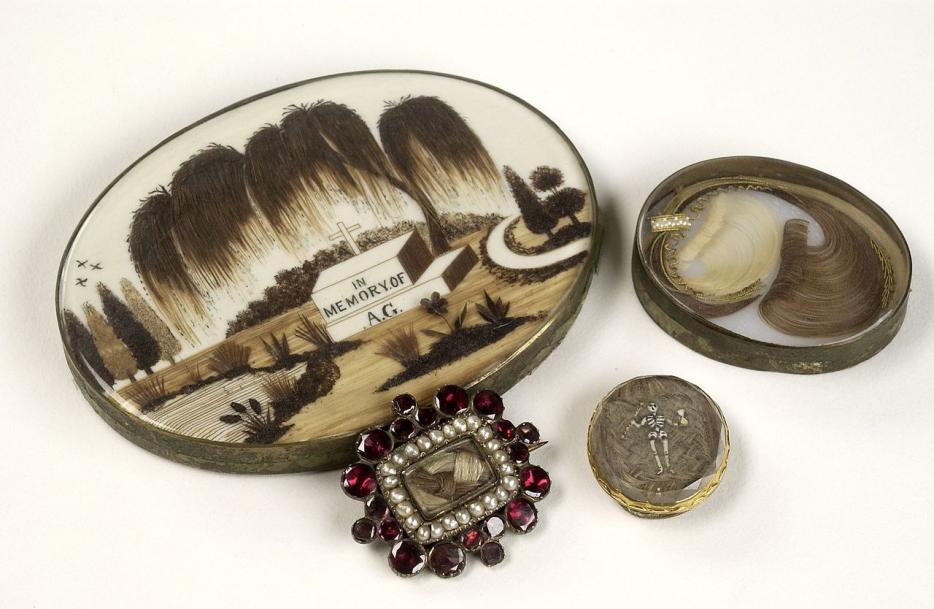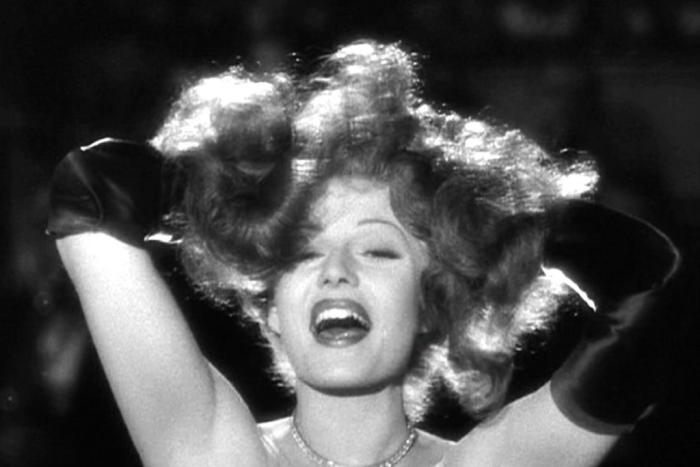Charles Dickens used to spend Sunday afternoons at the Paris morgue, staring at dead bodies. In The Uncommercial Traveler, he describes the "invisible force" that "drags" him to the morgue whenever he passes through the city. In his diaries he recounts visiting on Christmas and New Year's Day, studying newly arrived corpses as water dripped from the ceiling onto their bloated visages, delaying decomposition. On one visit, he observes custodians bringing in a newly arrived corpse, surrounded by a throng of curious onlookers. As the men roll up their sleeves to prepare the body for display, the eager gaggle speculates possible causes of death, favoring the grisliest possibilities: "Was it river, pistol, knife, love, gambling, robbery, hatred, how many stabs, how many bullets, fresh or decomposed, suicide or murder?"
The scene might sound like something out of a Tim Burton fever dream—shameless mobs ogling a gallery of waterlogged grotesques—if it weren't a perfectly realistic account of the kind of tableau that formed around the Paris Morgue for a good portion of the 19th century. Originally built on one of the islands in the Seine in 1804, the morgue reopened in 1864 behind Notre Dame, in part to make it more accessible to a public all too keen to visit "the only free theatre in Paris." The ostensible purpose was for citizens to help authorities identify bodies, many of which drowned in the nearby river or committed suicide, lending the morgue the illicit air so crucial to its appeal.
Parisians, though, were only a part of the morgue's audience. At the height of its popularity, it could draw 40,000 visitors in a single day, and countless guidebooks included the morgue as a main attraction for tourists visiting the city. Dickens himself was fascinated by both the bodies, which he described in fastidious detail in his journals, and the public's hankering for a kind of mortality narrative, the way people dreamt up macabre stories and scenarios to accompany the bodies laid out on the black marble slabs. More than just a fringe curiosity perched over a river that fed its exhibition halls, the city morgue was bound up not just in Parisian leisure society, but Victorian culture more broadly. It was one of the ways an era best remembered for its fussy decorum and suffocating moral climate satisfied its obsession with death.
Today, that fascination is almost exclusively relegated to cinema, in particular horror movies. Young couples grapple with hauntings and follow demonology leads in the Paranormal Activity franchise; in The Conjuring, a married team of New England mediums travels the country (and in the sequel, working-class England), talking to the dead and collecting keepsakes from the netherworlds they visit. The way we thrill to cinematic ghosts and hauntings and jump-scares is a descendent of Spiritualism and the séances that were its stock in trade, but it's not quite the same. Victorians clasping hands around a table, listening for the intimate messages of the dead, were explicit about their fascinations. Horror films succeed to the extent that they do because they allow those same proclivities to thrive on the sly. Modern spectres such as Freddy and Regan and Samara and Annabelle are not extensions of a cultural institution (death and the afterlife), but the institution itself. They’ve superseded the true roots of their primal appeal, and we’ve forgotten why it is we’re drawn to them. The Victorian supernatural was a transparent manifestation of the period's constant dialogue with death and dying.
*
The way we often think of the Victorian period—as a kind of upper class diorama, with corseted women in lavishly embroidered dresses being courted by male dandies in pocket watch chains and bespoke canes—belies the seriousness with which they accepted their moral duties, especially as they pertained to the dead. To Westerners today, the Victorian attitude toward death would probably appear obsessive, cultish, deranged—a fetish run amok. But Victorians had a different relationship with death and dying because their historical context demanded it. In the second half of the 19th century, England experienced explosive population growth, expanding from around 14 million people in 1830 to 32.5 million by 1901, and a capital city, London, that was arguably the cradle of the Industrial Revolution. While mortality rates were improving, life expectancy in many cities was still less than 30 years, and more than half of lower-class children died before their fifth birthday. As birth rates shot up, the population burgeoned, and life proliferated, from London to Leeds, so, too, did death.
Rather than avoid the subject or disguise it in euphemism, as we may be accused of doing today, Victorians put death front and center. They aestheticized death, indulged in subcultures devoted to it, and wove the art of dying into the social fabric of domestic life. For them, the threshold between the living and the dead was not an object of terror and revulsion but one of relentless fascination, a space to be explored, adorned, and commemorated. In Victorian England, death thrived in the same way as music or food or any worthy cultural institution thrives: by being appreciated and consumed in all different registers, from regional traditions to modish trends to alternative scenes. It was both culture and counterculture, classical, punk, and blues.
The elaborate mourning rituals associated with Victorian England are inextricable from the queen who gave the era its name. When Prince Albert died suddenly of typhoid fever in 1861, Queen Victoria was devastated. She became reclusive, only very rarely making public appearances, and dressed in mourning for the final forty years of her life. She insisted that servants in Windsor Castle maintain Prince Albert's quarters precisely as they had been when he was alive, right down to the hot water they carried to his room each morning for a shave.
This meticulous gloom gradually spread to the Queen’s subjects. Fashion, as was so often the case in this period, served important symbolic functions. As codes grew stricter and more intricate during Victoria's reign, and especially after Albert's death, widows were expected to follow mourning prescriptions for dress for anywhere from two to four years (some, like their queen, dressed for death for the rest of their lives). During this period they would move through various phases of sartorial grief: black immediately after death, followed by the "half-mourning" colors, grey, mauve, and lilac. Socializing during mourning was strictly forbidden, leaving widows extremely isolated. Like willowy wraiths, they brooded on the borders of the living and the dead.
While the queen's public dirge may have veered into the fanatical, these responsibilities were also central to Victorian society. Grief was literally ritualized, allowing the bereaved an established platform and outlet for their overwhelming anguish. The dress codes and social expectations for husbands, wives, children, and cousins were so draconian that to follow them was to have your grief sublimated into moral responsibility. The dead, the dying, and their consorts were all participating in the reverential spectacle of death. While it may not have been in the same garish vein as the Paris Morgue, there was a similar insistence on spotlighting and centralizing it, emphasizing its cultural primacy. The Victorians' instinctual response to death seemed to be to accommodate it, ensconce it in the way they lived and socialized, rather than pretend it isn’t there until a doctor gives the final declaration.
*
This openness to death also allowed spookier subcultures to flourish. In 1848, Kate and Margaret Fox, two sisters living with their parents in Hydesville, New York, claimed they were communicating with a spirit haunting their house. Calling the ghost "Mr. Splitfoot" (a sobriquet for the devil), the sisters developed a code to communicate with the ghost by counting the supernatural rapping they heard banging against the walls and floorboards.
The Foxes' alleged ability to contact the dead would become a watershed moment for the Spiritualism movement, a religious counterculture that claimed its roots in the Swedenborgian intellectual circles of New England and New York, but quickly jumped the Atlantic, becoming all the rage in England. Séances, in particular, became a phenomenon in the Victorian era. Mediums such as Maria B. Hayden and Daniel Dunglas Home captivated upper-class patrons, who would congregate in drawing rooms as spirits revealed themselves through table-rapping, automatic writing and, in some cases, temporary possession. The most talented mediums, like Hayden, were able to convincingly answer questions posed by visitors that only deceased loved ones could know.
In the more absurd instances, mediums imparted messages from the dead about the afterlife, discussing the nuances of its politics and social milieu. The place they described became known as Summerland. The Spiritualism scene was, perhaps inevitably, rife with showmanship and legerdemain. Brazen charlatans put on flashy phantasmagorias in darkened rooms, employing levitating objects, shaking furniture, and musical instruments that played themselves.
London's séances were one part occult arts and one part theatricality. For Victorians, toying with the borderlands between the living and the dead was a form of entertainment. For every grief-stricken Queen Victoria, who employed a prodigal thirteen-year-old medium, Robert James Lees, to help her talk to her beloved Prince Albert, there was another drawn to Spiritualism and séances simply because of its spine-tingling allure.
*
Victorians aestheticized death in a way almost completely absent today. In The Hour of Our Death, Philippe Aries declared the 19th century "the age of the beautiful death." A large part of this aestheticization lies in the Victorian era's passionate revival of memento mori. The ways in which Victorians remembered the dead ranged from death masks to early photography to mourning jewelry, including the ornate mourning lockets that held swatches of hair and miniature portraits and remain such iconic emblems of the era. The memento might have been ghoulish, but they were also completely free of stigma. For them, clinging to the dead was natural.
One of the more unsettling examples of this was death portraiture. In the 1850s, as photographers started developing cheaper ways to make daguerreotypes, photography became increasingly accessible to the middle classes. In death portraiture, families would dress up the corpses of dead loved ones in fashionable attire and pose alongside them for photographs. Infant mortality rates remained high, and fearful parents often saved money so that they could have photographs of their children taken after they passed. Death portraiture photos, eerie and poignant, became cherished family relics. They're also further evidence of Victorians' comfort with occupying the liminal space between the living and the dead. The photos camouflage the usual contours of mortality, presenting images that hardly acknowledge a difference between the stern countenances of brothers, mothers, and fathers, and the frozen faces of the dead. Today, death portraiture, given the more clinical name “post-mortem photography,” is almost entirely limited to the work of police and forensic pathologists investigating causes of death. The art of death photography has, quite literally, been pathologized.
But the era's aestheticization of death was about more than just turning the deceased into objets d'art. It also pointed to the way that people understood death as a responsibility of the domestic sphere. Family photos with dead brothers and sisters, rings emblazoned with urns and weeping willows, even death masks, which come across as ghastly totems today, were all ways of bringing death into the home.
With mortality rates as high as they were, and life expectancy still mostly in the twenties and thirties, depending on one's class, everyone reconciled themselves to family members dying at any time. They didn't have the luxury, as some of us do, of waiting until old age, so that the moribund can be sequestered to hospitals and hospice facilities. The majority of people died in the home. All sorts of domestic superstitions arose as a consequence of this. Clocks were stopped at the exact time of death. Mirrors in the house were covered, to prevent the deceased's soul from getting trapped inside a looking glass. A wreath covered in black crepe was put on the front door. Superstition was part of how the Victorians ritualized the act of death and dying, how they absorbed it into their domestic spaces.
Perhaps the finest demonstration of this was the deathbed. Far more than the figure of speech it is today, the deathbed in 19th century England was a highly literal domestic fulcrum by which family members stood vigil. It was there that they waited, with bated breath, for the dying's last words. This scene was so common, so recognizable among Victorians, that it was immortalized over and over in 19th century British literature, from Dickens's Little Nell to Helen Burns in Jane Eyre and Cathy Earnshaw in Wuthering Heights. Novelists may have seen in the deathbed and dying words an opportunity for maximum melodrama, but such dramatization extended to reality: a person's last words were treated as a final testament to her life, and signaled the transition from one world to the next.
*
Our attitude today toward death and dying is different. We brandish a repertoire of military metaphors—fighters, wars, battlefields—while hiding behind a medical-industrial complex all too eager to indulge our delusions and stubbornness to "hope against hope" and "fight the good fight." When death doesn't strike close to home, it fascinates us just as it did 150 years ago—so long as we’ve sufficiently deceived ourselves. Social media erupts in a rapture of grief whenever an artist or celebrity passes away, creating a cyber-space of mourning and posthumous worship that can sometimes seem disproportionate to the celebrity's popularity during his lifetime. Are people just grieving on Twitter, Facebook, and in obit think pieces, or are they also indulging their repressed infatuation with death?
The popularity of series such as Making a Murderer, Serial, and O.J.: Made in America purport to spring from the audience’s interest in the convolutions of justice and the specter of doubt, but they would go nowhere without murder and death as their molten cores. How popular would Netflix's true crime sensation have been if Steven Avery had been sent to prison for, say, selling heroin? The scintillation is in the dead body; it's the center of these stories' lurid labyrinths. As Stassa Edwards put it in The Awl in 2015, "the distance between the spectacle of the morgue and a Saturday evening marathon of Law and Order: Special Victims Unit is slimmer than most would admit."
That distance is really just one of self-denial. Victorian culture explicitly accepted death and our captivation with it as part of its social fabric, unabashedly tied to customs, rituals, religious practices, even the succor of the home. Today, we smuggle it through the back door: a blood-spattered horror movie, a true crime binge, an insatiable curiosity for the sordid circumstances of a celebrity death. The cognitive dissonance between our collective attitude toward death and dying (renunciation, denial), and the way we privately satisfy primal compulsions we never bother to interrogate might strike the Victorians as even stranger than a morgue that doubles as a museum.
In the 1918 paper "Science as a Vocation," the social theorist Max Weber introduced the idea of the "disenchantment of the world." Weber believed that modern society, characterized by secularization, science, and rationalism, had moved beyond the spiritual and religious ideas that once anchored it. Belief in the sacred and supernatural was rapidly waning, he argued, and where once the world stood as a "great enchanted garden," now it could be fully construed through science and subjugated through rational goals. The price of modernization and its cohort—the Enlightenment, the Scientific Revolution, secularized governments, bureaucratic states—was the dissipation of mystery. Victorian spiritualism, from séances to superstitions to exquisite death relics, might have been the last gasp of mysticism before Weber's disenchantment permanently solidified over the Western world. But if we want to engage death with the same whimsical brio as that period, enchantment is exactly what we need. If we want to escape the bleak onslaught of hospice centers, nursing homes, and futile medical war-waging, we'd do well to remember that the Stygian threshold we regard with such fear and repudiation can also inspire strange, brilliant worlds of curiosity and wonder.






